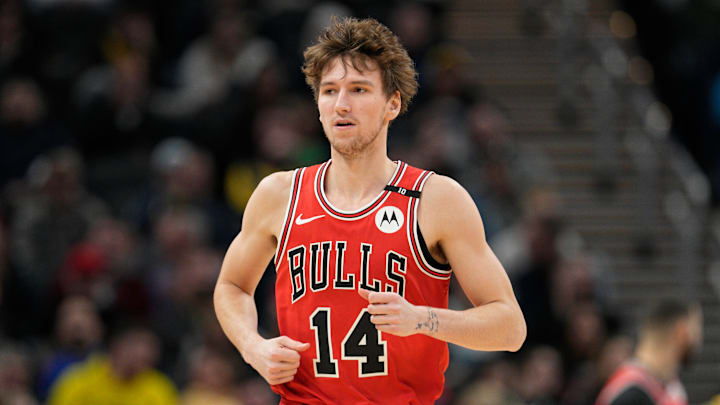There’s a lot riding on the Chicago Bulls’ sophomore, Matas Buzelis. While he didn’t exactly burst onto the scene last season, Buzelis still put together a respectable rookie campaign, averaging 8.6 points, 3.5 rebounds, 1.0 assists, 0.9 steals, and 1.2 three-pointers per game, earning All-Rookie Second Team honors in the process.
Nonetheless, as an athletic 20-year-old with elite two-way potential, Buzelis is the Bulls’ most-prized player. Among everyone on the roster, he has the clearest path to stardom. It’s still early, but there are no obvious flaws in his game that could hold him back.
Consequently, Buzelis’s well-rounded game produced a stat that only two other 2025 lottery picks can claim—excluding Devin Carter, who didn’t qualify, or he would have been included. Buzelis joined centers Donovan Clingan and Zach Edey as the only lottery picks with a positive on/off differential.
How Buzelis stands out with a positive on/off rating
Chicago was 0.5 points per 100 possessions better with Buzelis on the floor, translating to a roughly neutral net rating. His plus-0.5 differential placed him in the 53rd percentile. By comparison, Rookie of the Year Stephon Castle’s San Antonio Spurs were 4.8 points worse per 100 possessions when he was on the court, placing him in the 28th percentile.
The Bulls were worse offensively with the 6-foot-10 forward on the floor, but 2.3 points per 100 possessions better defensively. Rookies usually take longer to adjust on that end, making Buzelis’s proficiency on the less glamorous side particularly impressive. For comparison, reigning Defensive Player of the Year Evan Mobley’s Cleveland Cavaliers were only 1.4 points per 100 possessions better defensively with him on the floor.
Additionally, rookie guards and wings usually take longer to adjust, which helps explain why Clingan and Edey were the only lottery picks to post a positive on/off differential. While it would be unfair to dismiss either big man’s contributions, neither Clingan nor Edey had a usage rate above 16 percent. Buzelis, meanwhile, notched an 18.6 percent usage rate—sixth-highest among players to appear in at least 50 games.
Buzelis made his impact while playing on a subpar Bulls team that won 39 games. Clingan’s Portland Trail Blazers fared slightly worse, finishing with 36 wins, while Edey’s Memphis Grizzlies were much stronger, posting 48 victories. Thus, it's encouraging that Buzelis' and Clingan's losing teams were better with each rookie on the floor.
Few rookies, past or present, can claim a positive on/off split—especially lottery picks on teams with losing records. Buzelis certainly has a lot riding on him, but there are plenty of reasons to believe in his potential, chief among them a positive efficiency differential.
